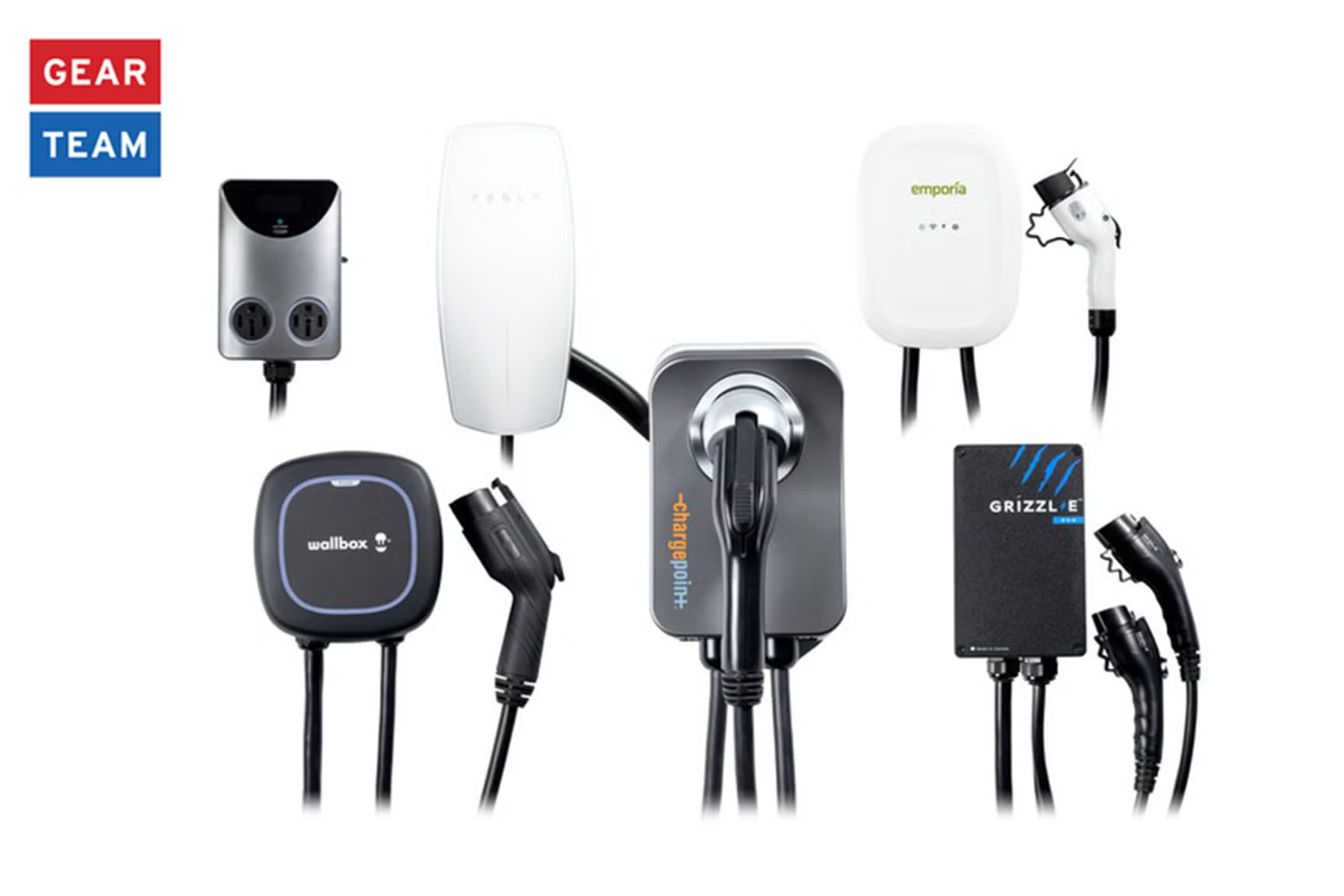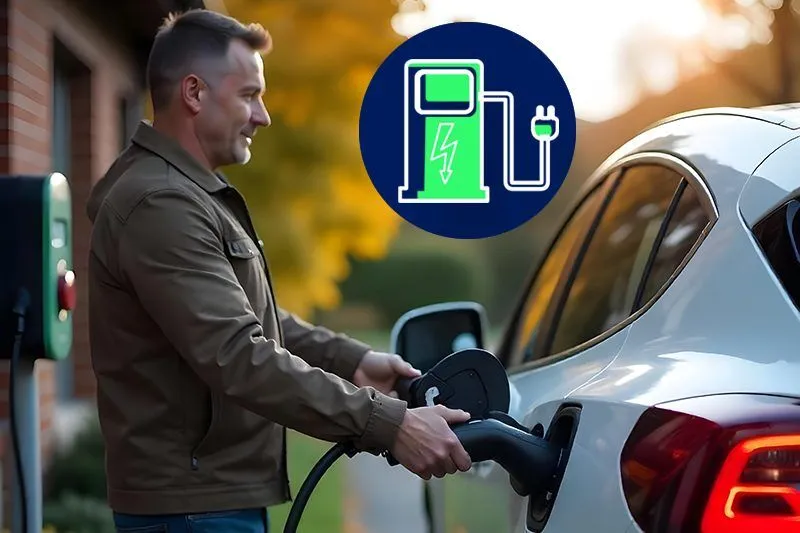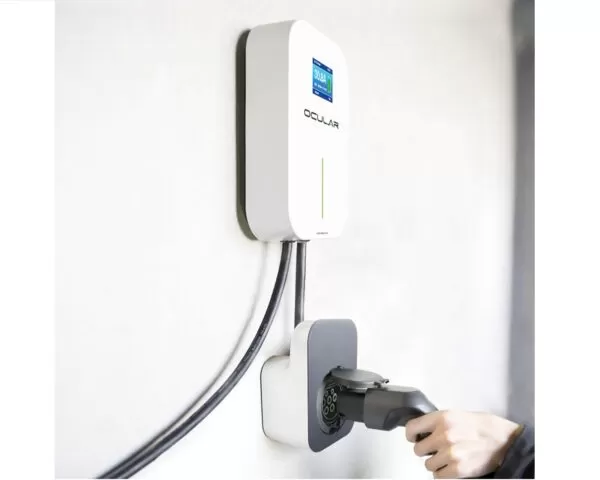Top Home EV Chargers for Australian Households
With the market for EVs steadily climbing, many prospective EV owners are considering making the switch. For EV owners, a home charging station is almost a non-negotiable. Public charging stations take forever, and unless you’re able to charge at your workplace, you’re going to be spending (or wasting) a considerable amount of time trying to keep your EV charged.
In this blog, we will give you an overview of some of the best EV chargers on the market today, explain some factors to take into consideration, and try to help you choose which EV home charger is best for you.

Why Choosing the Right EV Charger Matters for Your Home
Unfortunately, choosing an EV charger is not as easy as buying something like a phone charger. The plug and play of a USB-C or Lightning cable is replaced with investment and installation when it comes to EV chargers. What charger is right for you will depend on your needs. There are certain factors you’ll have to consider, such as cost, installation, and energy efficiency along with any other individual preferences. But more on that later.
While it’s difficult to outright say which EV charger is best, we’ve compiled the top 5 EV chargers in Aussie homes to date to help you make an educated decision.
Top 5 EV Chargers for Australian Households
1. Tesla Wall Connector
The Tesla Wall Connector is not only great for Tesla EV owners, they are also compatible with all other Type 2 EVs. It features a lightweight design, compatibility with the Tesla app and works on both single and three phase grids.
2. Hypervolt
Hypervolt chargers are designed in the UK. They are made from advanced polycarbonate compounds in collaboration with the German laboratories at Radiflam, which make them durable, weatherproof, and UV-resistant. Hypervolt chargers have a beautiful, sleek design and smart home technology integration.
3. Zappi
Zappi is a top choice for sustainable households. Available in both 7kW and 22kW model variants, this EV charger has three energy-efficient charging modes: ECO, ECO+ and FAST.
Zappi chargers integrate beautifully with renewable energy such as solar and wind to charge using clean self-generated energy. The device also monitors your energy use and will adapt its performance depending on energy tariffs and what charges most efficiently.
4. Wallbox
Hailing from Europe, Wallbox features smart and energy-efficient EV chargers in an attractive, compact design. Wallbox chargers have both tethered and untethered options available for their high-performance chargers.
The myWallbox app might just be the best EV charger app out at the moment. The app lets users monitor and control the status of their charge and lock/unlock remotely, along with a host of other smart features.
5. Ohme
Ohme is a prime example of cleaner and greener home EV charging. The convenient Ohme app can intelligently schedule charging times around your energy tariffs to reduce charging costs. The compact, blacked-out design is also widely popular among Ohme owners.

Factors to Consider When Choosing an EV Charger for Your Home
Here are some key factors to consider when deciding which EV charger is best for your home:
Installation Process and Costs
Installing an EV charger usually involves a professional technician for site assessment, cable routing, and testing once the installation is complete. In Australia, only a licensed electrician is allowed to install an EV charger. The cost will vary from installation to installation. A home EV charger and full activation from revcharge starts at $1550.
Bear in mind that if you wish to switch to three phase power, you may need to get certain permits which will add to the overall costs.
Charging Speed and Power Rating
Your charging speed will depend heavily on your charger type, your EV’s charging capabilities, and whether you have single or three phase power at home.
Fast chargers can be 7kW or 22kW (single or three-phase). Higher power ratings translate to faster charging times generally, but again this also depends on your home setup and EV’s capacity. For example, if you have an older model EV, a new 22kW charger will still only charge your vehicle at its 3.7kW or 7.4kW charging capacity.
Compatibility with EV Models
Not all EVs have the same type of plug. The Mennekes or Type 2 plug is the most common plug type in Australia. It supports both single-phase and three-phase AC charging.
However, there are also Type 1, CCS2 (Combined Charging System Combo 2), and CHAdeMO (Charge de move) plugs, to name a few. Many older EVs use Type 1 plugs. We should also note that all new EVs sold in Australia from 2020 have to be fitted with both AC and DC plugs.
EV Charger Incentives and Rebates in Australia
There are numerous government incentives and rebates for EV owners as the Australian government makes a push for a more sustainable future. There are also regional and state-based rebates available that you should research and see what you qualify for.
Some of these rebates and incentives include:
- The Electric Vehicle Charger (Residential and Business) Grants Scheme
- The DRIVEN Charger Rebate Stream
- The Sustainable Household Scheme
- The Zero Emissions Vehicle Subsidy
In addition to these there are also state-based cash incentives, free registration, stamp duty exemptions, and more.
Conclusion: Choosing the Best EV Charger for Your Home
Installing an EV charger at home can save you money and time. With the addition of eco-friendly home charger options, you can lower your environmental impact and charge your EV using clean, renewable energy.
Deciding which is the best EV charger for you requires consideration into your needs, preferences, and budget.
Looking To Purchase EV Charger? Get Yours Today!
revcharge provides an end-to-end service where customers can get the best EV home chargers and have a professional technician come and install it for you. If you’re looking for a new, sustainable EV charger for your home, choose revcharge for hassle-free, reliable shopping. Contact us for a free, no-obligation quote to get started!




